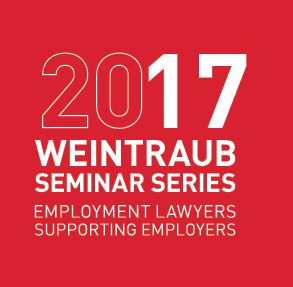Now Available! Weintraub Tobin’s 2017 Labor and Employment Seminar and Training Schedule
Published: December 9, 2016

Weintraub Tobin’s 2016 Labor and Employment Seminar and Training schedule is now available. Click here for a copy of the schedule.
If you have any questions on any of our seminars or would like to inquire on private, custom-tailored training, please contact:
Ramona Carrillo
400 Capitol Mall, 11th Fl.
Sacramento, CA 95814
916.558.6046
rcarrillo@weintraub.com

